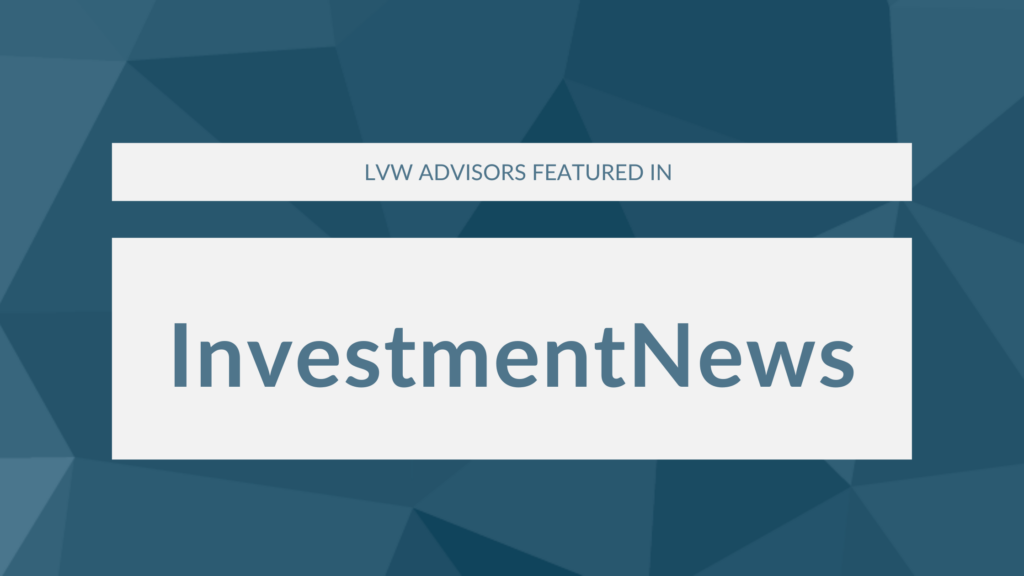Welcome to the spring edition of LVW’s The Serious Investor.
The Federal Reserve continued its tightening campaign during the first quarter, raising the target federal funds rate twice for a total increase of 50 basis points. Inflation moderated but remained high, with the Consumer Price Index falling to a 12-month rate of 5.0% through March. The labor market showed surprising strength early in the quarter before hiring declined to more normal levels.
There is an old saying that “the Fed keeps raising until something breaks.” The steepest rise in interest rates in history has contributed to considerable stress in the banking system. Silicon Valley Bank, the 16th-largest bank in the U.S., failed after losses in its bond portfolio contributed to a collapse of depositor confidence, sparking a classic bank run. Signature Bank fell shortly thereafter, and Swiss authorities arranged for UBS to purchase Credit Suisse.
The first quarter was decent for stock and bond investors. The equity market rallied as investors anticipated the end of Fed tightening. The S&P 500 gained 7.5% for the quarter. Returns were driven by only a handful of companies, however: Apple, Nvidia, Microsoft, Meta, Tesla, Amazon, Alphabet, SalesForce and Advanced Micro Devices accounted for over 90% of the S&P 500’s first-quarter gain. Bond yields increased through February, then fell precipitously in March as the banking crisis seemed likely to accelerate the conclusion of Fed tightening. The yield on the 10-year Treasury note dropped from 4.06% on March 2 to 3.47% on March 31, a decline of 14.5%.
Our investment discipline considers markets through the lenses of valuation, growth and liquidity. Our analysis leads us to the following conclusions as of early April:
Valuation: Not expensive or cheap
Equity valuations globally are neither excessive nor cheap. The S&P 500 is trading at about 18 times forward earnings—above the 25-year average but below peak valuations from a year ago. Smaller companies look more attractive, as do non-U.S. stocks. Stock buybacks and dividend distributions hit an all-time record in 2022, which we view as a signal of strength.

Source: JPMorgan
Growth: Earnings poised to slow
The economy is clearly slowing. Earnings are expected to come down over the coming quarters, with improvement later in 2023 and into 2024. As of this writing, S&P 500 earnings are expected to have declined 7% in the first quarter compared to a year earlier, according to FactSet, marking the second straight quarter of negative earnings. Top-line growth is also softening.
Liquidity: Continued tightness
Money supply growth is negative for the first time in U.S. history, on the heels of the largest increase in money supply ever. We believe banking stress will lead to much tighter lending conditions, while one of the most inverted yield curves in history discourages banks from lending. Tight liquidity will slow the economy; we think that is the Fed’s intention. Engineering a so-called soft landing will be difficult.
On our radar:
- Inflation, in particular the possibility that persistently higher inflation may force the Fed to continue tightening more than the market expects
- First-quarter corporate earnings reports and management commentary
- The condition of the consumer: retail sales, credit card balances and sentiment surveys
- Unemployment and job openings
- Deposits and money flow in the banking system
- Geopolitical tension
Summary
The bear case for stocks is easy to understand: Fed rate hikes will create a credit crunch. Recession will lead to a drop in earnings. The U.S. Treasury yield curve is screaming problems ahead and therefore the market has further to fall. We get it. But it is possible that the market has discounted the news. Stocks have been churning mostly lower for 16 months now.
Another saying goes, “If it is in the news, it is in the price.”
The stock market is a complicated mechanism. When everyone is bearish and positioned for a crash, the downside is likely largely incorporated in the market. Of course, some exogenous event could knock the stock market down further, but the probability of that type of event is low.
Every bear market has been followed by a bull market. We believe we are close to the end of this Fed rate hike cycle, meaning we have probably seen peak interest rates. It is time to start looking past the current cycle of bad economic news and get prepared for the eventual economic recovery.
Download a copy of this newsletter
Disclaimer: This material is provided by LVW Advisors (“LVW” or the “Firm”) for general informational and educational purposes only. Investing involves risk, including the potential loss of principal. Past performance may not be indicative of future results, and there can be no assurance that the views and opinions expressed herein will come to pass. No portion of this commentary is to be construed as a solicitation to effect a transaction in securities, or the provision of personalized tax or investment advice. Certain of the information contained in this report is derived from sources that LVW believes to be reliable; however, the Firm does not guarantee the accuracy or timeliness of such information and assumes no liability for any resulting damages. Any reference to a market index is included for illustrative purposes only, as an index is not a security in which an investment can be made. Indices are unmanaged vehicles that serve as market indicators and do not account for the deduction of management fees and/or transaction costs generally associated with investable products. To the extent that this material concerns tax matters, it is not intended or written to be used, and cannot be used, by a taxpayer for the purpose of avoiding penalties that may be imposed by law. Each taxpayer should seek independent advice from a tax professional based on his or her individual circumstances. The information in these materials may change at any time and without notice.
LVW is an SEC-registered investment advisor that maintains a principal office in the state of New York. This registration does not constitute an endorsement of the firm by the Commission, nor does it indicate that the adviser has attained a particular level of skill or ability. The Firm may transact business only in those states in which it has filed notice or qualifies for a corresponding exception from applicable notice filing requirements. Additional information about LVW is contained in the Firm’s Form ADV disclosure documents, the most recent versions of which are available on the SEC’s Investment Adviser Public Disclosure website, www.adviserinfo.sec.gov.









